Diverticulosis Diet PDF
-
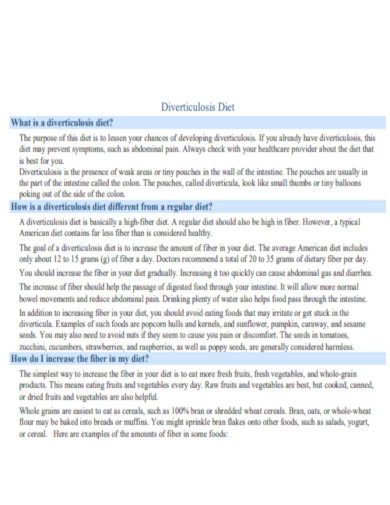
Diverticulosis Diet Plan
download now -
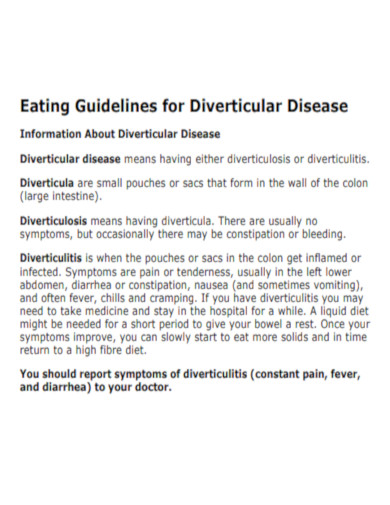
Eating Guidelines for Diverticulosis Diet
download now -
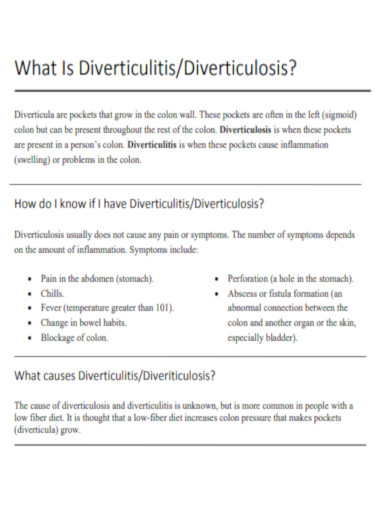
Editable Diverticulosis Diet
download now -
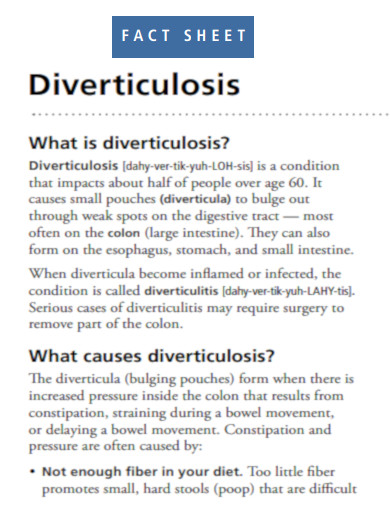
Diverticulosis Diet Fact Sheet
download now -

Diverticulosis Diet PDF
download now -
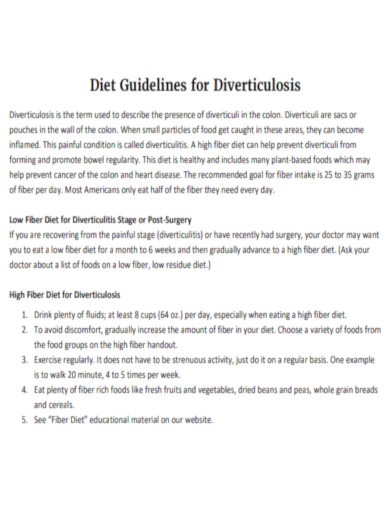
Diet Guidelines for Diverticulosis
download now -

Beneficial Diet for Patients with Diverticulosis
download now -
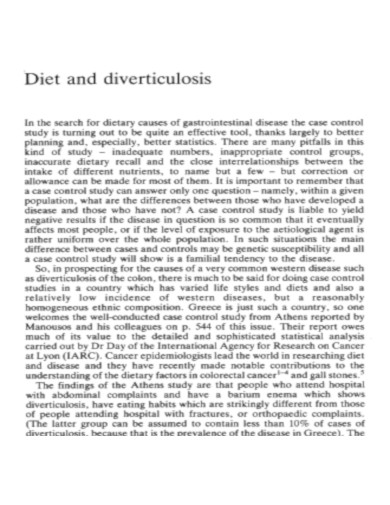
Diet and Diverticulosis
download now -
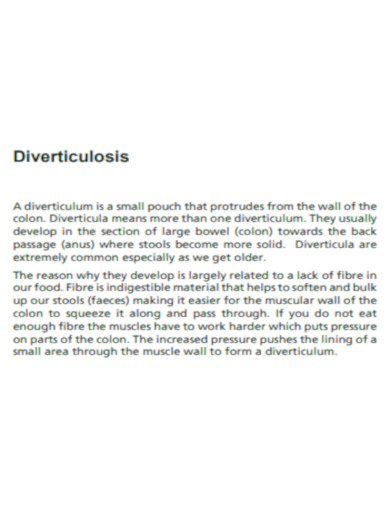
Basic Diverticulosis Diet
download now -
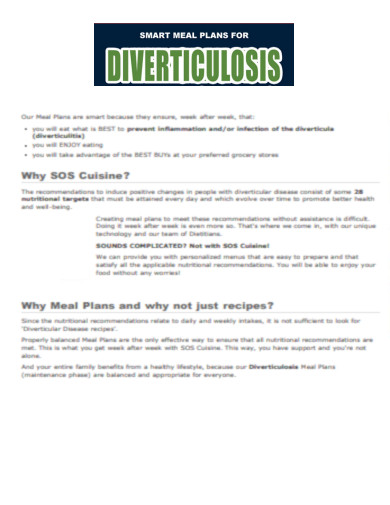
Smart Meal Diet Plans for Diverticulosis
download now -
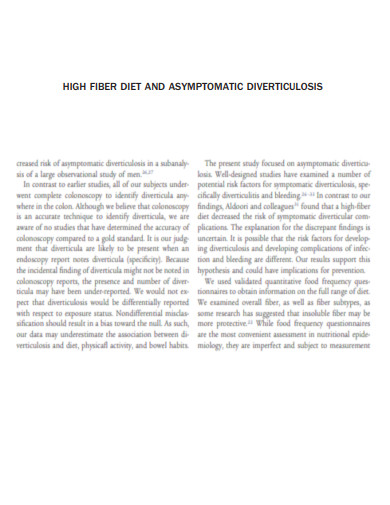
High-Fiber Diet and Asymptomatic Diverticulosis
download now -
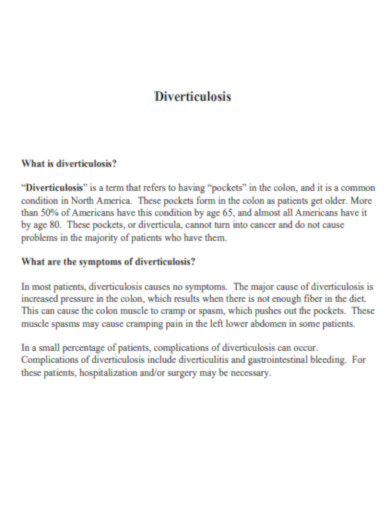
What is Diverticulosis
download now -

Recommended Diverticulosis Diet
download now -
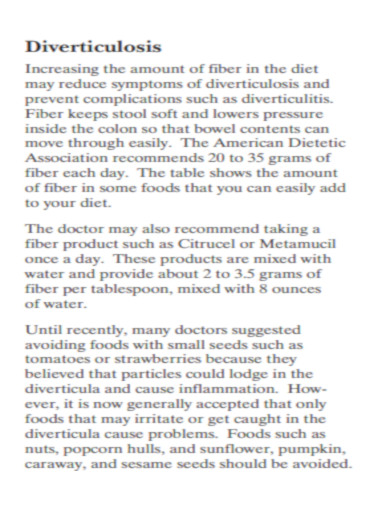
Simple Diverticulosis Diet
download now -
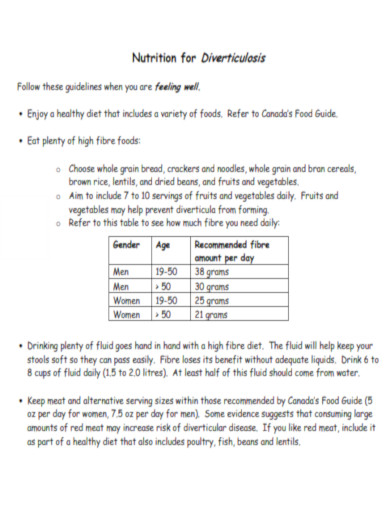
Nutrition for Diverticulosis Diet
download now -
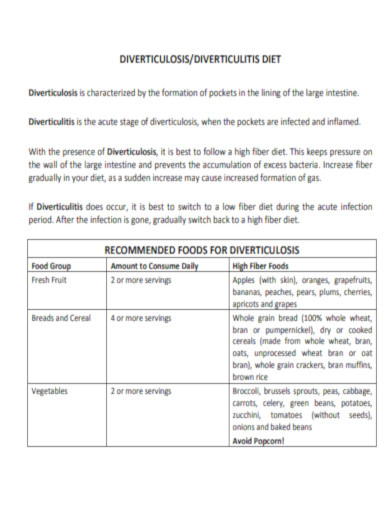
Diverticulosis Diet Food
download now -
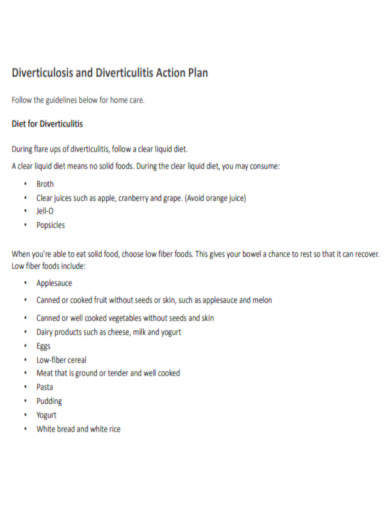
Diverticulosis Diet Action Plan
download now -
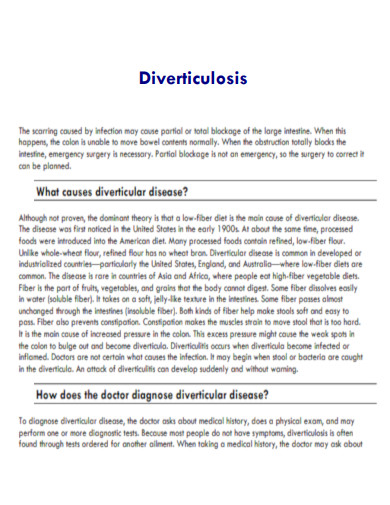
General Diverticulosis
download now -

Diverticulosis Diet Food Group
download now -
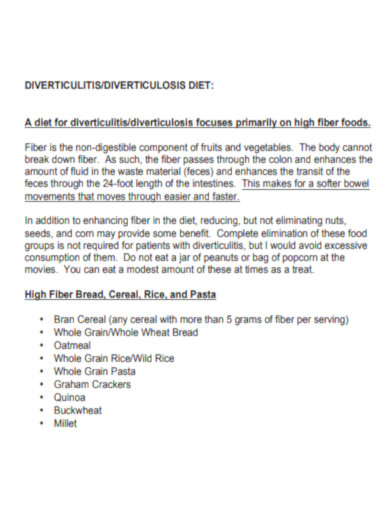
Diet for Diverticulosis focuses on High Fiber Foods
download now -
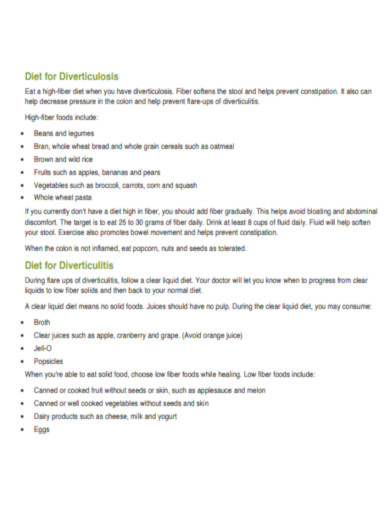
Diet for Diverticulosis
download now -
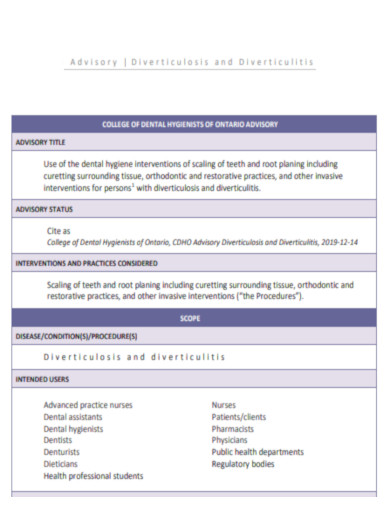
Advisory Diverticulosis Diet
download now -
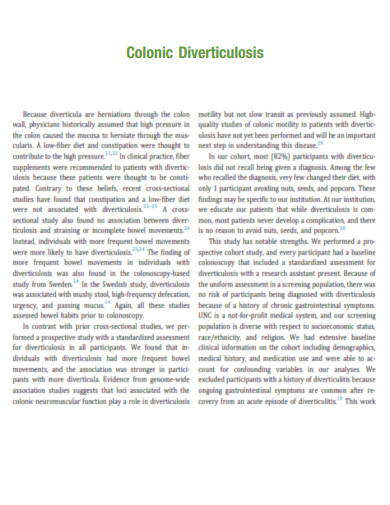
Colonic Diverticulosis Diet
download now
FREE Diverticulosis Diet s to Download
Diverticulosis Diet PDF
What is a Diverticulosis Diet?
Foods to Include in a Diverticulosis Diet
Foods to Avoid
How to Create a Diverticulosis Diet Plan
FAQs
Can diverticulosis be treated with diet?
What is the main cause of diverticulitis?
What foods heal diverticulosis?
What are the effective ways to prevent diverticulosis?
What are the harmful effects of diverticulosis?
What is a Diverticulosis Diet?
A diverticulosis diet is one of the diet plans and diet charts made for individuals who have a health condition called diverticulosis or small pockets extending out from the colon that occurs very gradually over a long time as they grow along the natural weak areas in the bowel wall. These pockets mostly occur in the sigmoid colon, the part of the body which specializes in contracting vigorously to keep a high pressure in order to regulate the movement of stool into the rectum. Because of these small pockets or bulges, the sigmoid colon becomes thickened and narrowed which can lead to major changes in bowel function such as discomfort, constipation, and/or diarrhea.
People with diverticulosis experience some symptoms such as thin or pellet-shaped stools, constipation, and occasional diarrhea. If left untreated, complications may arise which can be serious. Some of these complications are diverticulitis, bleeding, and perforation. To prevent diverticulosis from getting worse, preparing a diverticulosis diet or a high-fiber diet can be an effective therapy recommended by many medical experts and physicians. Also, there are related medical treatments and clinical procedures that must be performed to get the best results like a colonoscopy.
Foods to Include in a Diverticulosis Diet
Consider what you eat and drink every day using a food log spreadsheet because what you consume might cause or prevent diverticulosis. Research studies have shown that eating high-fiber foods may significantly lower the risk of getting diverticulosis. According to the Dietary Guidelines for Americans, 2020-2025, the recommended dietary fiber intake of 14 grams per 1,000 calories must be consumed to prevent this condition. If you have a 2,000-calorie diet, the recommended fiber intake is 28 grams per day.
Foods to Avoid
Your stool can become hard and harder to pass through the colon if you don’t eat sufficient fiber and drink plenty of water. If you let this happen, the muscles on your colon wall will more likely exert more pressure, leading to the appearance of bulges and pouches. Here is the list of the foods you need to avoid if you have diverticulosis.
How to Create a Diverticulosis Diet Plan
While preparing your diverticulosis diet plan, consider the two types of fiber: insoluble and soluble. Insoluble fiber supports gut health and eases or prevents constipation, being mostly found in the seeds and skins of most fruits like berries and bananas, as well as in whole grains and vegetables. While soluble fiber pulls water into your gut to aid in slow digestion and help you feel fuller longer, found in avocados, beans, legumes, pears, and other fruits, grains, and vegetables.
Step 1: Check Food Allergy, Intolerance, and Sensitivity
A published report stated that only 2 to 5% of people have true food allergies. If you have a food allergy, your immune system reacts to it as it would to a harmful invader, which can lead to the release of histamine from your body. When this happens, it can lead to sudden allergic reactions including digestive problems like diverticulosis. Food intolerance is when you have the inability to digest particular foods. For example, lactose intolerance is a type of food intolerance when one’s small intestine lacks the enzyme lactase vital to digest lactose. Take a food allergy, food intolerance, or food sensitivity test to check if you have certain food allergies, intolerances, and sensitivities so that you know what foods you will exclude from your diverticulosis diet.
Step 2: Consider Low FODMAP Foods
FODMAP (Fermentable, Oligosaccharides, Disaccharides, Monosaccharides, and Polyols) is an acronym for a specific class of carbohydrates called fermentable short-chain carbohydrates difficult for people to digest. Based on a research study, following a low FODMAP diet PDF plan may significantly help prevent high pressure in the colon, thus preventing the occurrence of diverticulosis. This is because it can temporarily restrict these complex carbohydrates to relieve uncomfortable symptoms and let the digestive system rest for a while. Some examples of low FODMAP foods are brie, cheddar, feta, rice, quinoa, oats, eggplant, potatoes, cucumbers, zucchini, grapes, berries, and pineapple.
Step 3: Include a Clear Liquid Diet
If you have diverticulosis and other severe gastrointestinal conditions, you must have a clear liquid diet first to keep your body hydrated while providing you with the essential nutrients and to let your digestive system a chance to recover. Consult with a licensed and professional nutritionist specializing in diverticulosis treatment. Some basic components of a clear liquid diet for people with diverticulitis are broth, fruit juices without pulp, gelatin, water, honey, and many others.
Step 4: Add the Appropriate Number of Servings
Follow the latest recommendations of medical health experts in the prevention of inflammation or infection of the diverticula when you incorporate the proper number of servings in your diverticulosis diet. For example, add one serving of dark green vegetables and one serving of orange vegetables every day. Include some whole grain products, low-fat milk, and meat alternatives.
FAQs
A good high-fiber diet may be beneficial to prevent the progress of diverticulosis. However, it will not be able to reverse the process. For example, having a high-fiber and vegetarian diet may decrease the potential attacks of diverticulitis.
The main cause of diverticulitis is the inflammation of the diverticula or the small bulges in the large intestine. This happens when there is an insufficiency of fiber in the body.
Some of the foods that can heal diverticulosis are beans, legumes, bran, whole wheat bread, whole grain cereals like oatmeal, brown rice, apples, bananas, pears, broccoli, carrots, corn, squash, and whole wheat pasta.
The effective ways to prevent diverticulosis are to eat more high-fiber foods, exercise regularly, drink lots of fluids, and avoid smoking.
Some of the harmful effects of diverticulosis are inflammation, infection, bleeding, or intestinal blockage.
Can diverticulosis be treated with diet?
What is the main cause of diverticulitis?
What foods heal diverticulosis?
What are the effective ways to prevent diverticulosis?
What are the harmful effects of diverticulosis?
Diverticulosis occurs more commonly in countries such as the United States where the diet is generally low in fiber. Statistical reports about this health condition revealed that more than 50% of adults over age 70 have diverticula, and 80% have no symptoms. Developing a high-fiber food diet plan like a diverticulosis diet plan is an effective way to ensure that all nutritional recommendations are met while treating this condition. Sample.net brings an eclectic collection of well-structured PDF document templates to guide you in developing a diverticulosis diet plan including a diet and exercise plan, a diet and workout plan, a dash diet PDF, and a food safety plan.
